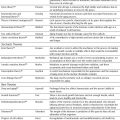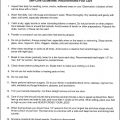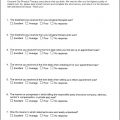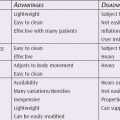PEARLS
❖ The age-related changes in the gastrointestinal system, such as decreased saliva, poor dentition, decrements of taste and olfaction, gastromucosal atrophy, and reduced intestinal mobility, will have the most impact on nutritional status because this system is directly involved in digestion.
❖ Obesity is common in older adults and can be due to decreased activity, medication, and poorly balanced diet. This problem is associated with numerous medical disabilities, such as osteoarthritis, diabetes, hypertension, and heart disease, and can greatly hinder an older person’s independence.
❖ The clinical evaluation of nutritional status can be done by the use of anthropometric measures, functional assessment tools, physical signs of nutrition deficiencies, or a combination of these.
❖ Older adults require a higher-quality, more nutrient-dense (ie, more nutrients per calorie) diet.
❖ The recommended daily allowance of nutrients changes with advancing age.
❖ Drugs may affect nutritional status in the simplest sense by their effect on appetite, but, more commonly, absorption, metabolism, and excretion of dietary constituents are altered.
❖ Despite the fact that the way to get an abundant supply of nutrients is through healthy eating (a variety of foods on a daily basis), many older individuals do not consume a balanced diet and require supplementation.
❖ Programs such as the federal food assistance program and congregate and home-delivered meals can assist the older person in attaining adequate nutrition.
As the population ages, it is increasingly important to understand the factors that affect the nutritional status and the resulting health status of older adults. Many factors contribute to inadequate nutrition, including health status, financial capacities, mobility, exercise, and physiological needs.1,2
Nutritional manifestations often overlap normal aging and disease and facilitate their progression. In fact, nutritional deficits frequently mimic and exacerbate the aging process. With older adults, under- and overnutritional problems and concerns are of great importance in accurately determining overall fitness and functional levels of activity. The Academy of Nutrition and Dietetics has continued earlier efforts begun by the Surgeon General with Healthy People 2010. The benefits of better nutrition (in addition to increased levels of physical activity) have been realized, with resulting increases in longevity and a compression of morbidity.3–5
This chapter addresses the changes related to aging that affect the nutritional well-being of older adults by looking at common deficiencies and risk factors. Guidelines for good nutrition in older adults and the impact of poor nutrition on the physical, emotional, and cognitive well-being of older adults are also addressed. In addition, components of nutritional programs for older adults are presented to provide the necessary guidelines for nutritional measures and the insights essential to assessing the nutritional status of older adults to promote health, prevent or reduce risks of certain diseases, support other medical interventions, and improve the quality of life in old age.
There is no clear demarcation to indicate where on the spectrum of “healthy old age” nutrition begins and ends. There is clearly a state produced by normal aging, but there is great difficulty in identifying this conceptually “healthy” state in the absence of overt or occult disease. As each cohort ages, there is a progressive variability in biological efficiency. This variability is a result of a combination of the disparate influences of activity, disease, environment, time, genetic profile, and nutrition on an individual’s aging process.
AGE-RELATED CHANGES IN THE GASTROINTESTINAL SYSTEM
Changes in the digestive system have the most impact on nutritional status because the gastrointestinal tract is most directly involved in ingestion, absorption, transport, and excretion of food products.1,6
Changes in the Liver
There is a decrease in liver enzyme activity with aging. This directly affects the metabolism of carbohydrates and the breakdown of drugs and alcohol in the system. Alterations in synthetic, excretory, or metabolic processes can affect the response to disease and the disposition of drugs. This is more thoroughly covered in the subsequent chapter on pharmacology (ie, Chapter 7).
Liver weight decreases, and this parallels the anthropometric changes of decreased body weight and muscle mass. In advanced age, the liver becomes disproportionately small, and there is a reduction in the number of hepatocytes. Other changes in liver morphology are nonspecific and may be due to extrahepatic processes. There is an increase in portal and periportal fibrosis, and liver cells tend to be larger. It is suggested that the enlargement of liver cells may be due to compensatory hypertrophy.1 An increased amount of lipofuscin pigment is present in Kupffer cells, and changes in the Golgi apparatus and rough and smooth endoplasmic reticulum may parallel hepatic functional changes observed in older individuals.7
Decreases in liver blood flow occur with age, resulting in the potential for changes in drug metabolism. Levels of albumin, a product of hepatic synthesis, are frequently reduced in older adults and result in a decreased rate of total body protein synthesis.1
Other Age-Related Changes
Other age-related changes or chronic diseases influencing food habits are those affecting the musculoskeletal, neuromuscular, cardiovascular, and pulmonary systems. Problems creating pain, weakness, paralysis, breathing difficulties, or fatigue create loss of function, resulting in immobility. Shopping, opening food containers, and cooking can often become insurmountable obstacles.
Changes in body composition and weight and a decline in physical exercise and activity levels also influence nutritional needs. With aging, as with inactivity, there is an increase in adipose tissue, a decrease in lean body mass, a decrease in basal metabolism (only a problem from the prospective of obesity), a decrease in caloric requirements, and a decrease in total body water.8
Predictors of potential malnutrition include recent weight loss, depression, bereavement, loneliness, multiple medications and long-term medication use, and functional losses.
CHRONIC DISEASE AND NUTRITION IN OLDER ADULTS
Aging processes and lifelong eating patterns are often associated with diseases and disorders that influence the life span, such as atherosclerosis, hypertension, osteoporosis, diabetes, cancer, Alzheimer disease, renal disease, dental disease, obesity, and immunity.9 The prevalence of many chronic degenerative diseases increases with advancing age. These disease states may have synergistic negative effects on individuals whose physiological function is already compromised by the aging process. Many chronic conditions have dietary implications that alter the need for nutrients, the physical and metabolic form in which nutrients are delivered, and the activities of daily living related to food and eating. Modifications in the type or amount of energy or in the energy-providing nutrients, vitamins, and minerals may all be called for in order to provide nutritional support or to control the progression of chronic degenerative diseases. Unfortunately, manifestations of malnutrition, such as cracks in the mouth or a bright red tongue, are overt signs of a problem that is far advanced. For example, physical signs of dehydration are usually not apparent until it is in the advanced stages. With decreased nutrient intake, there is gradual tissue depletion with evolving biochemical abnormalities before an overt deficiency surfaces. Table 6-1 summarizes the most frequently encountered conditions and the related nutritional problems.
Obesity and Nutrition in Older Adults
Obesity is common in persons aged 65 years and older. A diet that is higher in calories than required for the body’s energy needs leads to energy storage and fat deposition. Excess calories from fat, carbohydrate, and protein foods lead to obesity. Some drugs promote appetite (hyperphagic drugs), leading to obesity because of increased food intake. Alcohol intake, in addition to a diet that provides sufficient food energy to meet caloric needs, can also lead to obesity. A reduction in body weight in persons with obesity is commonly impeded by a disinclination for exercise. Exercise may also be restricted as a result of secondary effects of obesity, such as osteoarthritis and cardiovascular dysfunction, leading to physical disabilities.
Table 6-1. Chronic Conditions and Related Nutritional Problems
CHRONIC CONDITION | RELATED NUTRITIONAL PROBLEMS |
| Alzheimer disease, other dementias | Cachexia and emaciation due to poor eating habits and self-care |
| Celiac sprue | Malabsorption, diarrhea, weight loss, malabsorption with secondary vitamin deficiencies |
| Cerebrovascular accident | Suppressed cough reflex, increased risk of choking, dysphagia |
| Chronic mesenteric ischemia | Abdominal pain after eating, weight loss, malabsorption |
| Constipation | Prolonged transit time especially with immobility, decreased colonic motility |
| Colitis | Decreased elasticity of rectal wall, abdominal discomfort, fecal impaction |
| Coronary artery disease | Dyspnea, drugs lead to suppressed appetite and constipation |
| Diabetes mellitus | Glucose intolerance, poor energy utilization |
| Diverticular disease | Gastrointestinal pain, bowel discomfort, possible bleeding, infection, lack of appetite, weight loss |
| Emphysema | Dyspnea leading to lack of appetite and difficulty eating |
| Gallbladder disease | Gallstones, cholecystitis, pancreatitis, food restriction, some foods repugnant, undernutrition |
| Gastritis/duodenitis | Malabsorption of proteins, vitamin B12 and iron, some food restrictions, other foods repugnant, undernutrition |
| Gastroenteritis | Malabsorption, protein and vitamin B complex deficiencies, poor absorption of calcium and all other nutrients, loss of appetite |
| Hiatal hernia | Gastroesophageal reflux, heartburn, dysphagia |
| Liver diseases | Foods repugnant, restricted protein, drug level changes |
| Obesity | Energy intakes usually low, need for essential nutrient intake |
| Osteoarthritis | Difficulty in food shopping and preparation |
| Osteoporosis | Dyspnea with vertebral collapse, distortion of thorax and abdominal compression, lack of appetite, difficulty eating, decreased intake |
| Peptic ulcer | Obstruction, bleeding and perforation, dysphagia, dyspepsia, retrosternal discomfort, antacid overuse, undernutrition |
| Pernicious anemia | Vitamin B12 deficiency, spinal cord degeneration |
| Renal disease | Limited ability to handle protein, sodium, potassium, water |
Adapted with permission from Satin DG, ed. The Clinical Care of the Aged Person: An Interdisciplinary Perspective. New York, NY: Oxford University Press; 1994.
Obesity is associated with numerous medical disabilities. Causal relationships have been identified between obesity and the development of late-onset diabetes, essential hypertension, and hypertensive heart disease. Obesity increases the risk of cardiovascular disease. Data from the Framingham Heart Study demonstrate a continuous relationship between obesity and coronary morbidity and mortality (greater in men than in women). Obesity is associated with increased blood pressure and serum lipoprotein levels.10 The effects of weight change on blood lipid profiles are considerable. The Framingham Study has shown that weight reduction results in modest increases in high-density lipoprotein cholesterol.11 It appears that both blood lipids and blood pressure are sensitive to the degree of obesity.
Obesity is the most common nutritional problem of public health concern in the United States.12 Although gross obesity is uncommon in the very old (because persons with morbid obesity are more likely to die at an earlier age), obesity is still a serious disability in older adults.
Obesity is also associated with the development of abdominal hernias. Gallbladder disease and gout are more common in individuals with obesity, and, most importantly, obesity is associated with increased symptoms of degenerative osteoarthritis. Other complications include varicose veins with stasis dermatitis and stasis ulcers and bacterial and yeast infections between fat folds.10,11
In general, obesity is a hindrance to independent living in older adults. Despite the limitations of modern actuarial reports and experimental findings, the data do show that obesity shortens life span and that limitation in food or caloric intake can result in a longer life.13
Nutrition and Immunity in Older Adults
Immune function declines with age, leading to increased infection and cancer rates in older individuals.14,15 In fact, recent progress in the study of immune system aging has introduced the idea that rather than a general decline in the functions of the immune system with age, immune aging is mainly characterized by a progressive appearance of immune dysregulation throughout life.15,16 Nutritional factors play a major role in the immune responses of older individuals and are of great consequence even in the very healthy older population.
Systemic studies have confirmed that nutrient deficiencies impair immune system response and lead to frequent severe infections, resulting in increased mortality, especially in older adults.16–19 Protein-energy malnutrition results in a reduced number and function of T cells, phagocytic cells, and secretory immunoglobulin A antibody response. In addition, levels of many complement components are reduced.16,18 Similar findings have been reported for moderate deficiencies of individual nutrients such as trace minerals and vitamins, particularly zinc, iron, selenium, and vitamins A, B6, C, and E.16,17 For example, zinc deficiency is associated with profound impairment of cell-mediated immunity such as lymphocyte stimulation response and decreased chemotaxis of phagocytes. In addition, the level of thymulin, which is a zinc-dependent hormone, is markedly decreased.16,20 The use of nutrient supplements, singly or in combination, stimulates the immune response and may result in fewer infections in older adults and reduce the problems associated with malnourished, critically ill older adults.
Malnutrition is often one of the consequences of chronic and neoplastic diseases.17–19 Additionally, secondary immunological changes occur as the result of environmental factors other than diet, including drug intake, physical activity, and stress, or are alternatively due to underlying diseases. For instance, the effects of high lipid intake as well as the impact of diseases such as Alzheimer disease and atherosclerosis underline the complexity of immunological alterations to be expected in old age.20 Because aging and malnutrition exert cumulative influences on immune responses, many older people have poor cell-mediated immune responses and are therefore at greater risk for infection and complications associated with an immunosuppressed response.21
Both excessive thinness22 and severe obesity are associated with impaired immune responses, and obesity increases the risk of infection.23 All forms of sugar (including honey) interfere with the ability of white blood cells to destroy bacteria. Diets high in sucrose impair the immune system response.24,25 Alcohol intake, including single episodes of moderate consumption, has an immunosuppressive effect.26,27
Excessive intake of total dietary fat impairs the immune response, but some types of fat (monounsaturated fats, as found in olive oil) have no detrimental effects and may even be beneficial.28,29 Research on the effect of the omega-3 fats abundant in fish, fish oils, and flaxseed oil has shown that they improve immune system function and reduce infections in critically ill patients.30 The positive effects of omega-3 fats have been demonstrated to be further improved with the addition of antioxidants, especially vitamin E.31
As previously discussed, zinc supplements have been reported to increase immune function, and this effect is particularly potent in older adults, most of whom have zinc deficiencies.32,33 Vitamin A plays an important role in immune system function and helps mucous membranes, including those in the lungs, resist invasion by microorganisms.34 Beta carotene and other carotenoids have increased immune cell numbers and activity in human research, an effect that appears to be separate from their role as precursors to vitamin A.35 In older adults, supplementation may increase natural killer cell activity.36 Vitamin C stimulates the immune system by elevating interferon37 levels and enhancing the activity of immune cells.38 Vitamin E enhances all measures of immune cell activity in older adults.39 A combination of antioxidant vitamins A, C, and E has been found to significantly improve immune cell number and activity compared to placebo in a group of hospitalized older people.40 Most double-blind studies find that older people have better immune function and reduced infection rates when taking a multivitamin.33,41
CLINICAL EVALUATION OF NUTRITIONAL STATUS
There are several physical findings related to nutritional status, and many of the normal changes of aging mimic clinical findings described as pathognomic of malnutritive states in older adults.2 Clinically, overt malnutrition is rarely caused by a primary deficit in nutritional intake; rather, it is more likely associated with gastrointestinal tract dysfunctions or with one of the chronic debilitating illnesses common to older adults. In contrast, subclinical malnutrition,42 by definition undetectable by physical findings on clinical evaluation, is probably frequent in certain at-risk older populations. These subgroups might include those who are institutionalized, those with mental disturbances or gross central nervous system disease, or those at or below the poverty level. In subclinical malnutritive states, an older individual may manifest depleted nutritional reserves as a failure to thrive. Diminished nutritional reserves may contribute to postoperative confusion, delayed recovery times of homeostatic function, slow wound healing, and increased susceptibility to infection.43
Anthropometric variables provide estimates of body composition that can be used as indicators of nutritional status. The most relevant of anthropometric measures are weight and skinfold thickness.44 Weight is a measure of all the constituents of the body. However, weight does not reflect any of the alterations or changes in the relative proportions of body constituents that accompany aging, specifically the increase in fat and the decline in lean muscle mass. Variables such as food or fluid intake, constipation, or problems producing edema are not accounted for by weight measures.45,46 Weight/height measures have been standardized to define “ideal” weights. Another measure using weight is a weight/stature measure. This measure provides a moderate correlation with percent of body fat and a high degree of correlation with total body fat in older adults.47 A third weight measure is relative weight. Height decreases approximately 3 cm during an average life span as a result of loss of bony mass secondary to osteoporosis, loss of joint space resulting from intervertebral disc shrinkage and wearing of articular cartilage, and postural changes, such as kyphosis due to anterior vertebral wedge fractures. Because of the potential inaccuracies in the estimation of height, other related measures are used. For example, recumbent length or arm span measures are used for comparison to actual height measures. Arm span is a reasonable equivalent to height during all stages of the life span. The measure of “wing span” reflects the height before loss of stature with age. Relative weight is then determined using adjusted height tables that have been standardized to account for possible height reduction adjusted for age.48,49
Other anthropometric measures include triceps/sub-scapular skinfold thickness and upper arm circumference. The accuracy of skinfold thickness measures in older adults is questionable due to age-related changes in the skin and altered skin compressibility. Upper arm circumference is a good measure of total body fat in edematous patients in cases in which weight might be misleading. However, there are progressive muscular changes associated with aging, specifically an increase in fibrous tissue, loss of muscle fibers, and an increase in intramuscular fat, that may confound the accuracy of this measure. Measuring skinfold thickness at the inferior angle of the scapula is more precise than triceps caliper measures as a result of these confounding factors. It is important to recognize that all of these anthropometric measures do not actually measure nutritional status; rather, they provide an indicator of nutritional status. When compared with standardized norms, these measures provide a percentile nutritional rank for the individual patient.50,51
Laboratory evaluations that may contribute to nutritional evaluation or appropriate nutritional intervention include assessment of visceral protein status (serum transferrin or albumin), renal and liver function, pancreatic endocrine function (glucose), serum electrolytes and minerals (calcium, magnesium, and phosphorus), and hematologic evaluation (total lymphocyte count and red cell indices). Although not routinely used, delayed cutaneous hypersensitivity testing (skin test antigens) may be helpful to gauge systemic immune function. The determination of nitrogen balance by 24-hour urinary urea nitrogen is helpful in nutritional intervention regimens, particularly in the use of enteral or parenteral nutrition. The aim of nutritional intervention is to minimize the degree of negative nitrogen balance (ie, excessive loss of body protein not compensated by adequate nutritional intake). If the nitrogen intake is less than the output, the patient is considered to be in negative nitrogen balance, with a net loss of body protein. This contributes to progressive muscle wasting, fatigue, and immune compromise. Therefore, obtaining this information is imperative in comprehensive nutritional assessment of older individuals.50,51
Functional assessment tools are also valuable in assessing the older adult’s nutritional status. Increasingly, attention has been paid to the importance of maintaining essential activities of daily living among older adults. Simple questionnaires have been developed that appear to be closely associated with nutritional risk.45,50–52 These provide another type of assessment tool important in assessing the overall nutrition-related functional status. Functional assessment tools such as those evaluating basic activities of daily living and instrumental activities of daily living provide important insights into the well-being of older adults.45,50,53
The clinical or physical examination may reveal findings associated with nutritional deficiencies.50,51 The history and physical examination are the most important components of the assessment of nutritional status. This should include weight history (current, usual, and ideal), assessment of oral intake changes (type and duration), symptoms impacting nutrition (including anorexia, nausea and vomiting, diarrhea, constipation, stomatitis/mucositis, dry mouth, taste/olfactory abnormalities, and pain), medications that may affect intake or metabolic requirements, other medical conditions that may affect nutritional intake or nutrition intervention options, and performance of status evaluation. Physical examination entails a general assessment of physical condition, including evidence of weight loss, loss of subcutaneous fat, muscle wasting, presence of sacral or tibial edema, or ascites.
Table 6-2 provides possible clinical manifestations of nutritional deficiencies that can occur in older adults. It is important to keep in mind that before ascribing any physical findings elicited on physical examination to nutritional problems, the clinician should consider whether the findings are consistent with normal aging or with an underlying disease state.
Obtaining a quantitative as well as a qualitative dietary history can be helpful in dietary assessment, especially as a means of demonstrating to the older adult or his or her family or caregiver that changes can be made to increase calorie, protein, and micronutrient intake. Useful data also include specific likes, dislikes, and intolerance of specific foods by the person. The latter may help to determine the need for specific supplemental nutrients or enzymes (lactase, other disaccharidases, or pancreatic enzymes).
Table 6-2. Physical Manifestations of Malnutrition
NUTRIENT DEFICIENCY | PHYSICAL MANIFESTATION |
| Protein | Edema, hypoalbuminemia, enlarged liver, diarrhea |
| Protein/energy | Muscle wasting; sparse, thin, dry, brittle hair; dry, inelastic skin; muscle weakness |
| Vitamin A | Poor visual accommodation to dark, Bitot’s spots (eyes), dryness of the eyes, hair loss, impaired taste, gooseflesh |
| Vitamin D | Bowed legs, beading of ribs, other skeletal deformities (rickets) |
| Vitamin K | Bleeding (poor coagulation of blood) |
| Thiamine B1 | Cardiac enlargement, mental confusion, irritability, calf muscle tenderness and foot drop, hyporeflexia, hyperesthesia, paresthesia |
| Riboflavin B2 | Fissures around mouth; reddened, scaly, greasy skin around the nose and mouth; magenta-colored tongue |
| Niacin B3 | Bright red, swollen, painful tongue; pellagrous dermatitis; depression; insomnia; headaches; dizziness; dementia; diarrhea |
| Pyridoxine B6 | Neuropathies, glossitis, nasolabial seborrhea |
| Folic acid | Red, painful, shiny, smooth tongue; skin hyperpigmentation |
| Vitamin B12 | Mild dementia; sensory losses in hands and feet; red, smooth, shiny, painful tongue; mild jaundice; optic neuritis; anorexia; diarrhea |
| Vitamin C | Joint tenderness and swelling, hemorrhages under the skin, spongy gums that bleed easily, poor wound healing, petechiae |
| Essential fatty acids | Sparse hair growth; dry, flaky skin; depression and psychosis; dementia |
| Calcium | Poor reflexes, poor cardiovascular accommodation to activity, slow mental processing, depression, dementia |
| Magnesium | Lethargy and weakness, anorexia and vomiting, tremor, convulsions |
| Iodine | Goiter |
| Iron | Pallor; pale, atrophic tongue; spoon-shaped nails; pale conjunctivae |
| Zinc | Sluggish muscle contraction, poor wound healing, diminished taste and appetite, dermatitis, hair loss, diarrhea |
Stay updated, free articles. Join our Telegram channel

Full access? Get Clinical Tree








